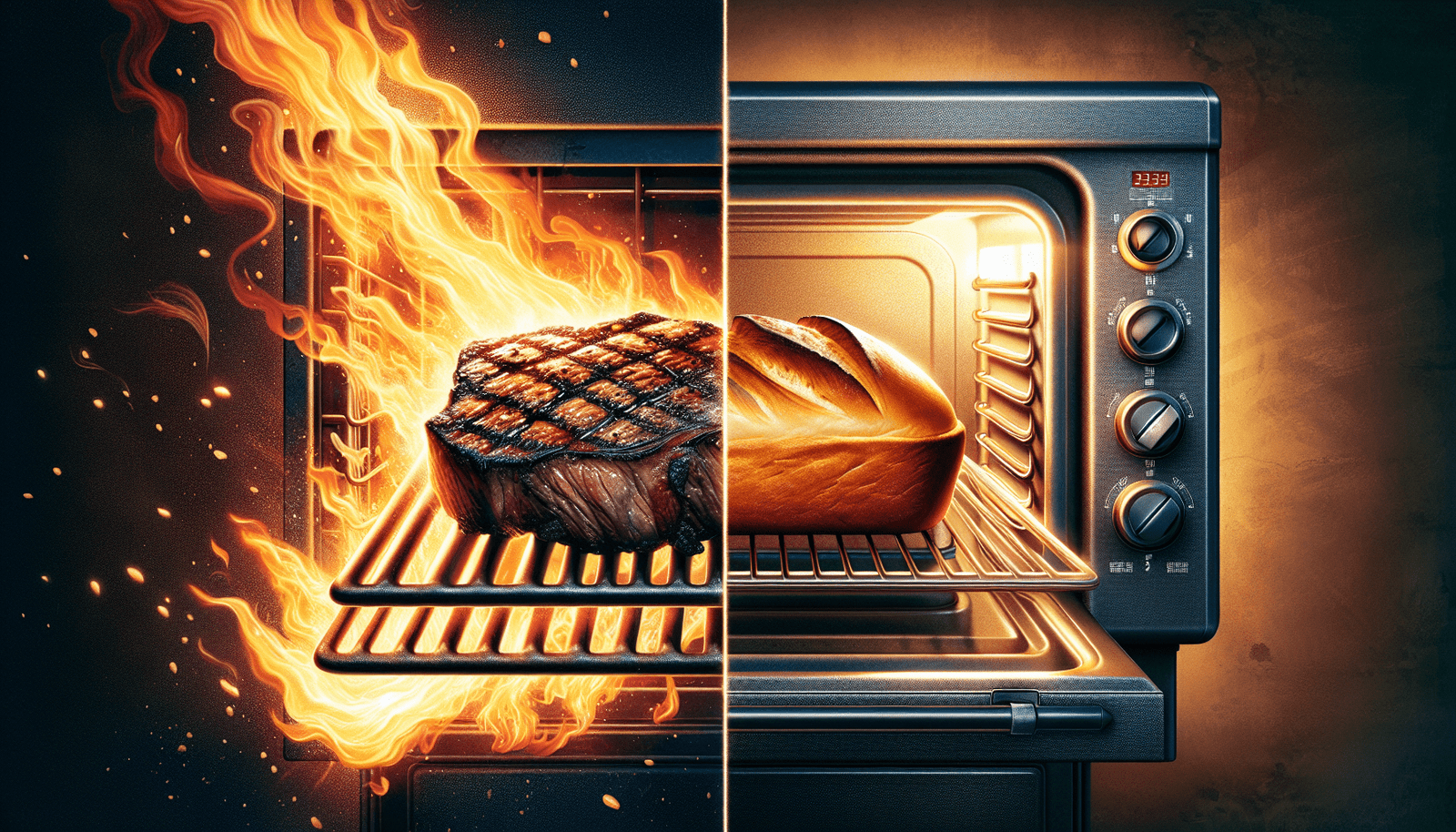What’s the difference between broiling and baking?
Understanding the Basics
When it comes to cooking techniques, broiling and baking are often used interchangeably, but they actually have distinct differences. Both methods involve using dry heat to cook food, but they vary in terms of temperature, source of heat, and cooking times. Let’s break down these two popular methods to help you understand the key differences.
Broiling
Broiling is a cooking method in which high heat is applied directly to the food. The heat source for broiling is located above the food, typically just a few inches away. This intense heat creates a crispy and browned exterior while sealing in the juices of the food. Broiling is a quick cooking method, perfect for thin cuts of meat, fish, or vegetables that benefit from a nice sear on the outside.
Broiling is great for quickly cooking thin cuts of meat, fish, or vegetables that benefit from a nice sear on the outside.
Baking
On the other hand, baking involves cooking food by surrounding it with hot air in an enclosed space, such as an oven. Baking uses lower temperatures than broiling and takes longer to cook food thoroughly. This method is ideal for cooking casseroles, bread, cakes, cookies, and other dishes that require even and consistent heat distribution.
Baking is ideal for dishes that require even and consistent heat distribution, such as casseroles, bread, cakes, and cookies.
The Temperature Difference
One of the key differences between broiling and baking is the temperature at which they are cooked.
Broiling Temperature
Broiling typically uses very high temperatures, ranging from 500°F to 550°F (260°C to 290°C). This high heat is necessary to create that characteristic crispy exterior on food quickly.
Broiling typically uses very high temperatures, ranging from 500°F to 550°F (260°C to 290°C).
Baking Temperature
Baking, on the other hand, uses lower temperatures, usually between 325°F to 450°F (160°C to 232°C), depending on the recipe. These lower temperatures allow for slower, more even cooking, perfect for baked goods and casseroles.
Baking uses lower temperatures, usually between 325°F to 450°F (160°C to 232°C), depending on the recipe.
Heat Source
Another significant difference between broiling and baking lies in the source of heat used for cooking.
Broiling Heat Source
When broiling, the heat source is located above the food, with the broiler element in the oven or a separate broiling unit in your kitchen. The direct heat from above sears the outer layer of food quickly, creating a crispy texture while keeping the inside moist and tender.
For broiling, the heat source is located above the food, whether it’s in the oven or a separate broiling unit.
Baking Heat Source
In baking, the heat source surrounds the food on all sides within the oven cavity. This allows for even heat distribution, cooking the food thoroughly from all directions. The radiant heat in the oven slowly cooks the food to perfection.
In baking, the heat source surrounds the food on all sides within the oven cavity, allowing for even heat distribution.
Cooking Time
The cooking time is another factor that distinguishes broiling from baking.
Broiling Cooking Time
Broiling is a quick cooking method, as the high heat cooks the food rapidly from the top. For thin cuts of meat or fish, broiling may only take a few minutes per side to achieve the desired doneness.
Broiling is a quick cooking method, ideal for quickly cooking thin cuts of meat or fish.
Baking Cooking Time
Baking, on the other hand, takes longer than broiling as it uses lower temperatures to cook food thoroughly. Baking times can vary widely depending on the recipe and the type of food being cooked. Baking is a slower method, but it ensures that the food is cooked evenly throughout.
Baking takes longer than broiling, as it uses lower temperatures to cook food thoroughly.
Types of Food for Broiling and Baking
While broiling and baking are both versatile cooking methods, they are better suited for certain types of food.
Foods Suited for Broiling
Broiling is ideal for cooking thin cuts of meat, fish, and vegetables that benefit from a quick sear on the outside. It works well for foods that you want to cook quickly while developing a crispy texture, such as steaks, chicken breasts, and seafood.
Broiling is ideal for thin cuts of meat, fish, and vegetables that benefit from a quick sear.
Foods Suited for Baking
Baking is perfect for dishes that require slow, even cooking, such as casseroles, bread, cakes, cookies, and pies. It’s the preferred method for baked goods that need time to rise and develop complex flavors, like bread and cakes.
Baking is perfect for dishes that require slow, even cooking, such as casseroles, bread, cakes, and cookies.
Summary
In conclusion, broiling and baking are both popular cooking methods that use dry heat to cook food, but they have distinct differences in terms of temperature, heat source, cooking time, and suitable foods. Broiling uses high heat from above to quickly sear the exterior of food, while baking uses lower heat from all sides to cook food evenly. Understanding these differences will help you choose the right cooking method for your culinary creations. So whether you prefer a crispy, seared steak or a fluffy, moist cake, now you know the key differences between broiling and baking.
